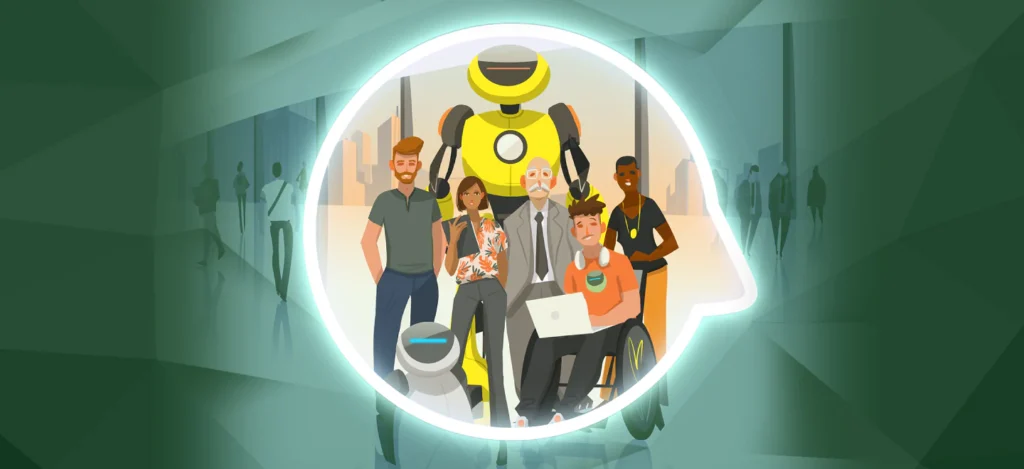At a time when there are up to five generations at a workplace, there is a great deal of talk about the role of expectations and generational experiences when companies hire, onboard, and manage new employees. The vast technological advancements among workplace generations have further created different experiences that caused different expectations for retaining employees.
There are at least four generations in the workplace today: baby boomers, generation X, millennials, and generation Z. Managing these workers means managing a workforce with different perspectives, values, goals, and experiences. However, these differences pose a danger to you as a leader. While generational differences might not always be the real issue, here are ways to resolve generational gaps at work.
Open Communication

No matter the industry that you’re in, open communication differentiates good workplaces from bad workplaces. When people don’t communicate well, things go wrong so fast. You will notice increased absenteeism, poor customer service, increased employee turnover, and lower employee productivity.
Open communication at work can help you avoid office conflicts, encourage innovation and sharing of new ideas, and promote productivity. Open communication enables you to be mindful that people prefer different communication styles.
For instance, millennials may prefer emails to communicate about their absence or connect to clients through social media. The older generation, on the other hand, may prefer a one-on-one chat or a call.
Consider a Flexible Work Policy
Flexible work policies allow for flexible working schedules that offer employees the benefit of working outside the normal working schedule. Some policies give employees the freedom to work only when they are productive or work from where they feel comfortable.
Flexible work arrangements succeed when your team receives the right training. If you plan to oversee teams with different schedules and hours, you’ll be required to tailor-make their support and use managerial style.
Before fully implementing a flexible work policy, run a trial to ascertain whether programs will work properly. The trial should last for a month to help you gather enough data for better decision-making.
Giving your employees the flexibility to work can help relieve workplace pressure. Elderly employees might have most of their professional life sticking to the principle of spending 12 to 14 hours at their desks. Millennials might prefer working in spurts, from a coffee shop, or conference room, or the sandals of the beach.
Lean Into Unique Strengths
Instead of viewing generational gaps as a concern in the workplace or an irksome barrier to collaborating successfully, see them as strengths. Every generational group, whether it be baby boomers, generation x, millennials, or any other, have their distinct needs and expectations for the way they work.
Tapping into those differences will only strengthen the workforce, as it enables them to work the way that makes them most comfortable and productive, while also offering the best of themselves to teammates. For example, older generations in the workplace will surely have knowledge to pass down to younger colleagues, who in turn, can demonstrate the use of tech and monitoring social trends that they’ve grown up familiar with.
Too often employers feel the need to change and mold their staff to their preference. When it’s much more conducive to success for them to build up on who they already are and provide them the resources, encouragement, and empowerment they need to reach their full potential.
Leveraging Technology
Technology such as UCAAS can help you strike a communication balance among generations at work. UCaaS is a system that can fundamentally change how you interact internally with your employees to deliver unbeaten customer experiences. This technology brings together internet telephones, instant messaging, and other communication tools to enable you to switch between different modes of communication with a single tap or click. To take advantage of this versatile tool, browse service options at https://www.ringcentral.com/ucaas.html.
Foster a Culture of Asking for Help

The culture of asking for help builds workplace connections by allowing your team to share information and resources. Most employees, especially the young generation, are often reluctant to ask for help because they fear being labeled as selfishly pursuing their interests at the expense of others. The elderly, on the other hand, may shy away from asking for help for fear of being labeled ‘less informed’ or old-fashioned.
Regardless of the experience you have in your field, you need to ask for help. While asking for help at work might be challenging, your employees need to understand that it’s the best way to build their skills and build stronger relationships with coworkers. Asking for help can create a collaborative work environment, help employees learn new skills, help employees manage workload better, and develop strong relationships among themselves.
Encourage your elder staff to teach and learn and the younger employees to ask for help and provide support to everyone trying to crack into their way of doing things. Employees can ask for help by creating a list of things they have tried and their potential solutions, carefully choosing who to ask for help from, being specific, and being available to help.
Challenges of Working with Different Generations
When different generations come together, there is a higher risk of miscomunicating and misunderstandings to occur. To manage misunderstandings and conflicts, make sure that you create a clear communication plan that will suit every employee’s preference. If the challenge involves compensation, understand different compensation levels to better understand your employees.
The greatest barriers that colleagues and work teams face can often be resolved through practicing mindfulness. It takes laying out a solid foundation for communicating openly and with respect. There are certain age-related notions and pressures that might deter coworkers from collaborating. Acknowledging those beliefs and challenging them is the first step to better understanding and working with a diverse group of staff.
That can only be achieved if someone reaches out and creates the initial opportunity to connect with a colleague. As soon as there’s a beginning to develop on, whether it be by voicing ideas and concerns during team meetings, or providing feedback and receiving it in return, a culture fostering inclusion and fostering productive rapport is born.

